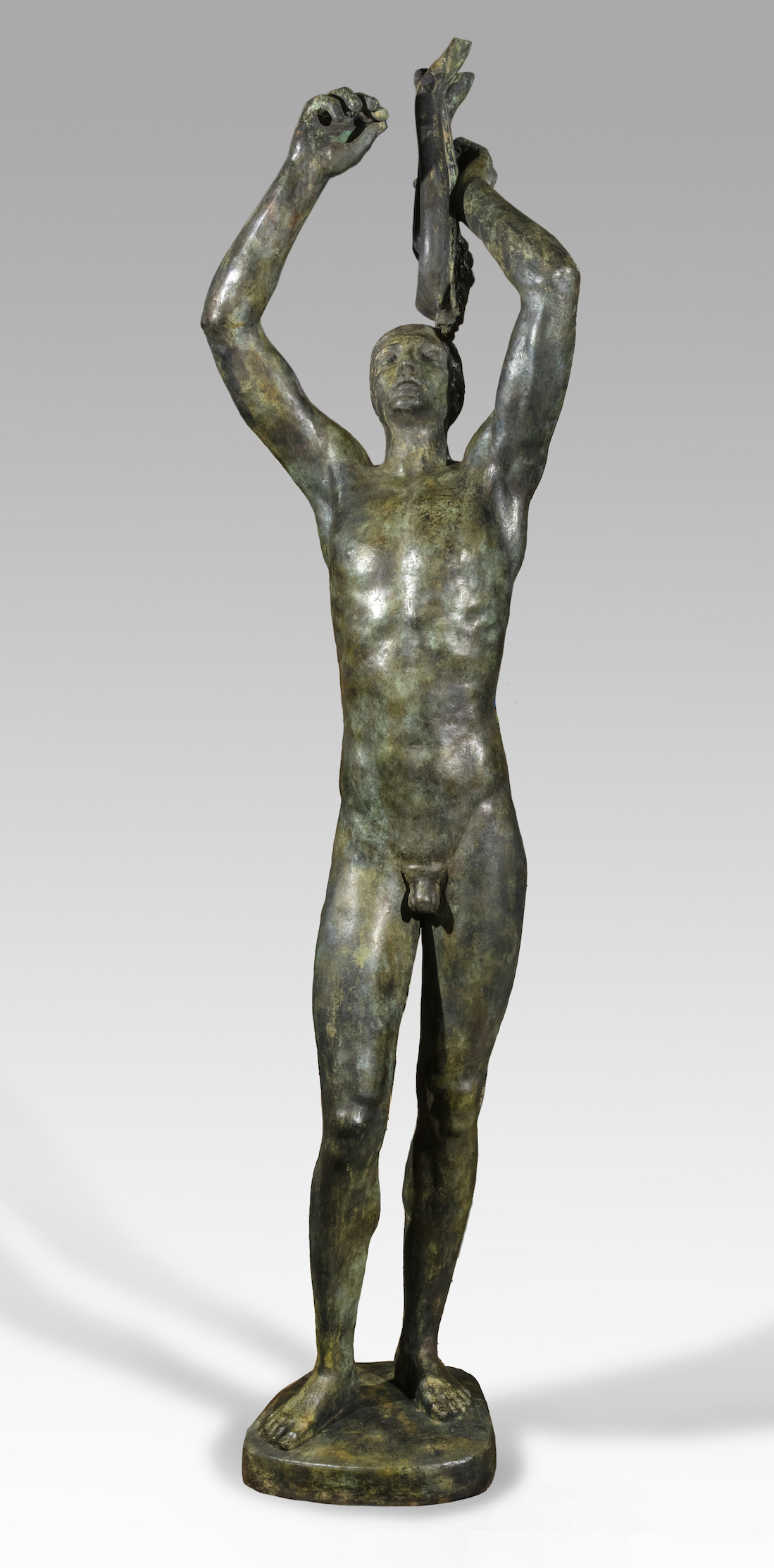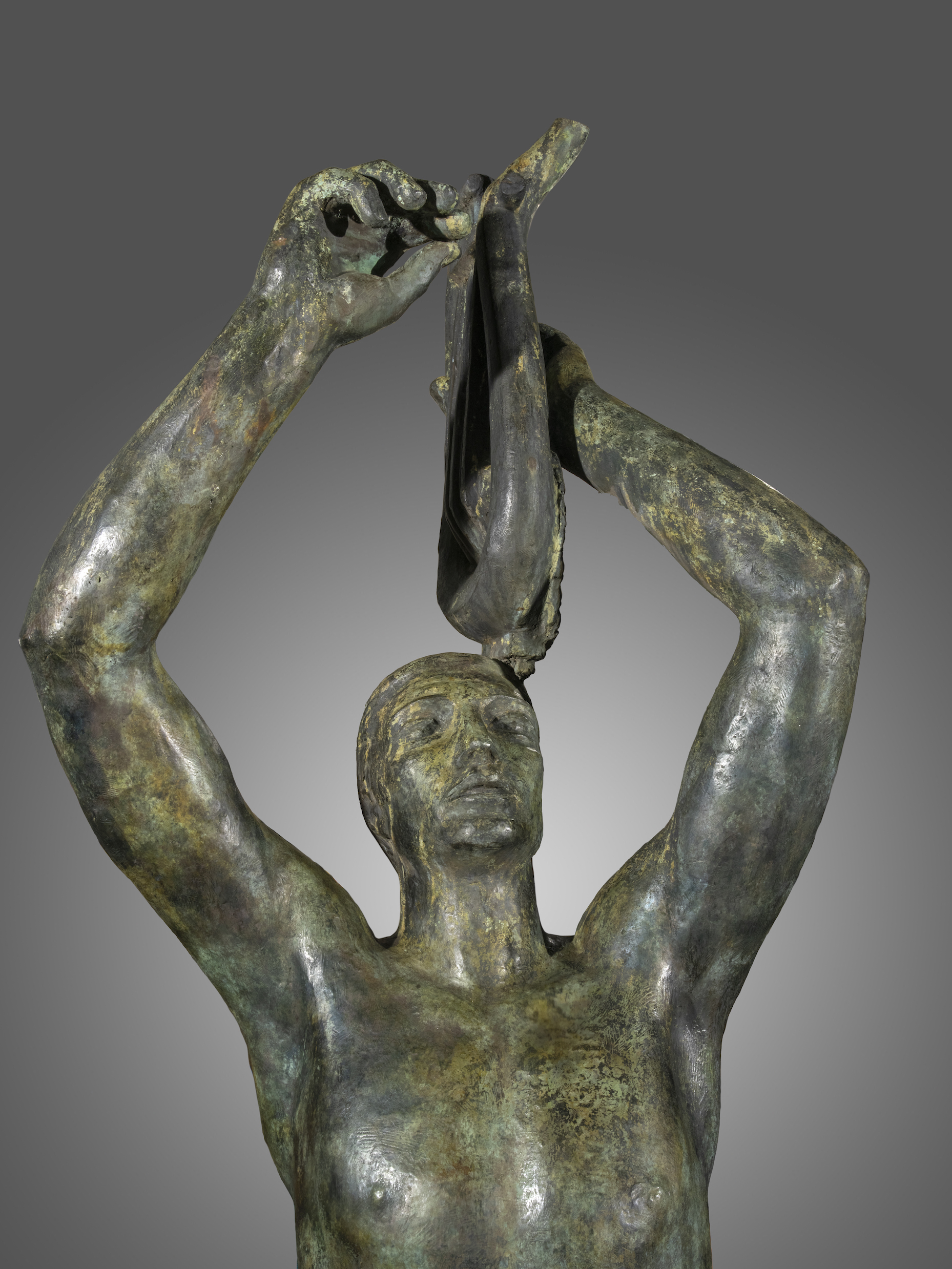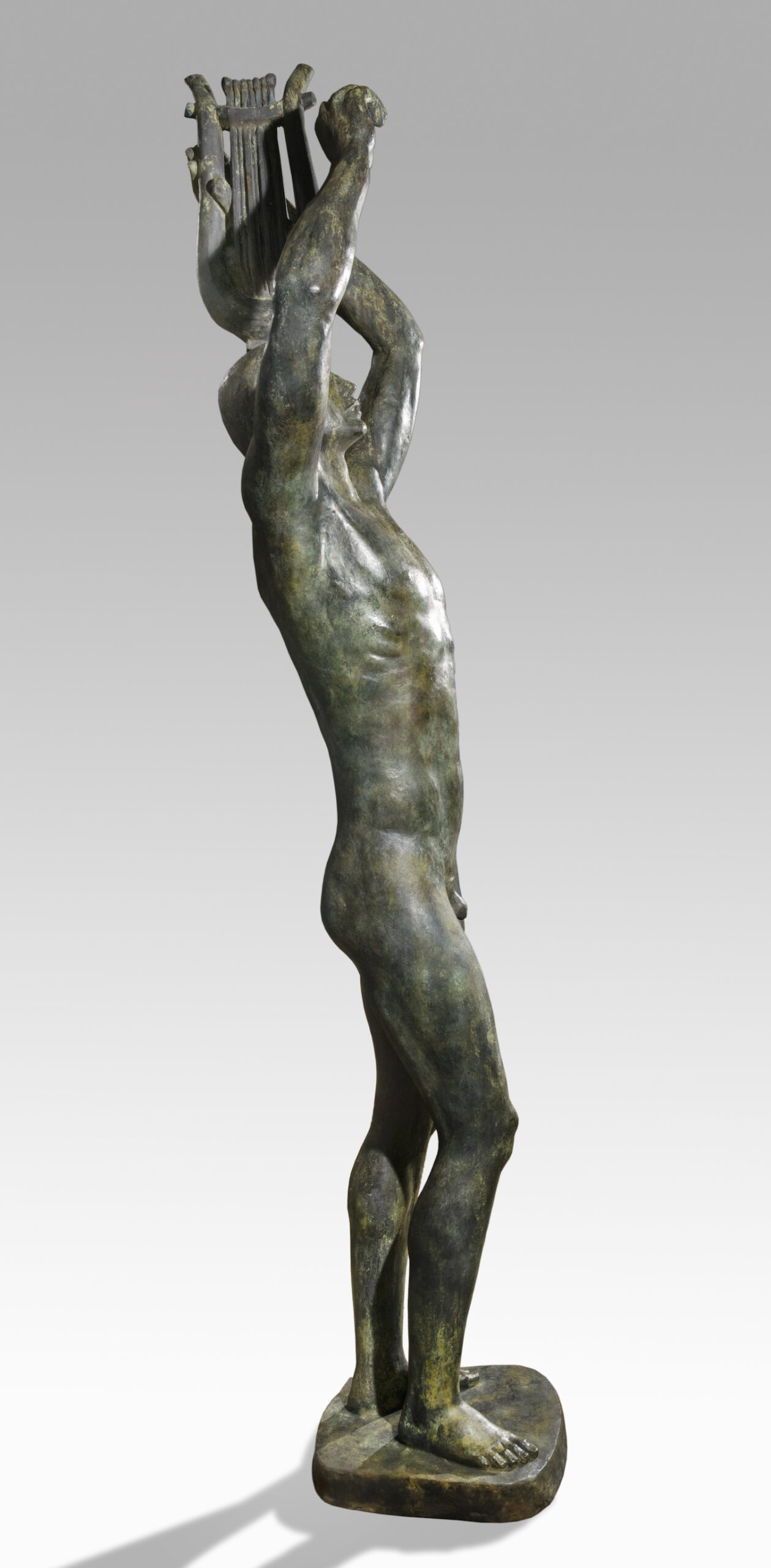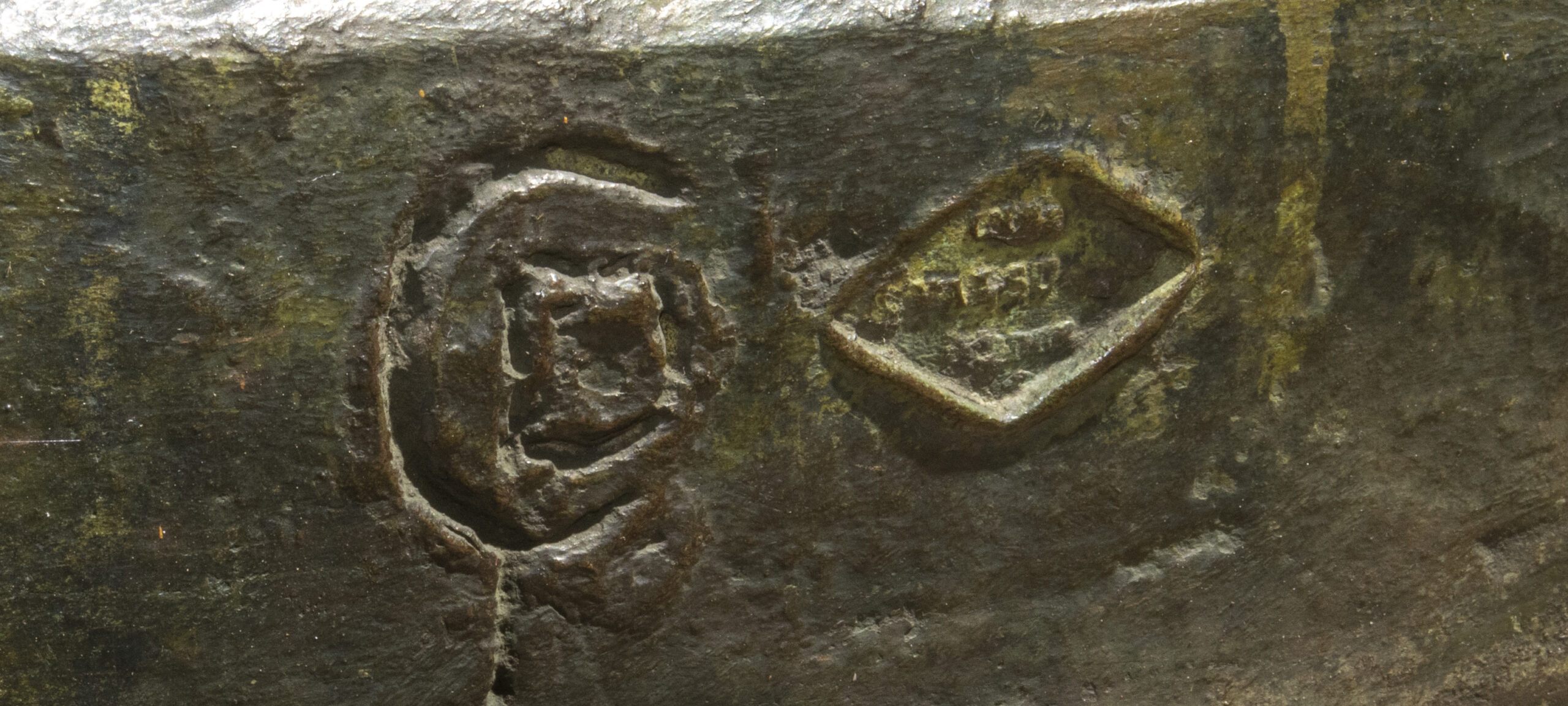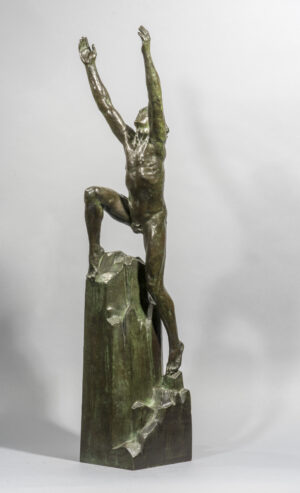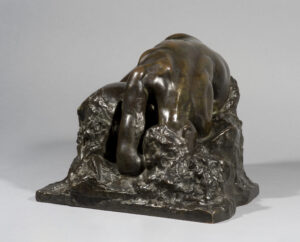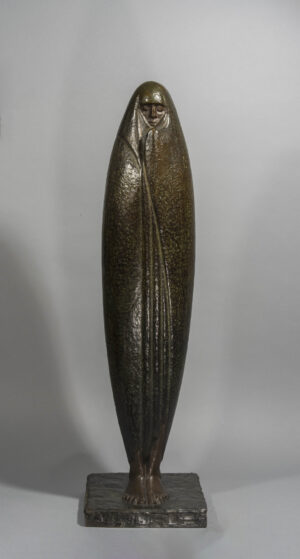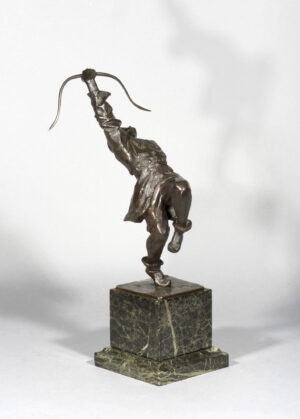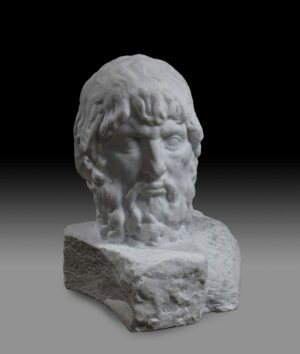Description
Pierre-Alfred-Noël Cazaubon followed the footsteps of Maillol and Bourdelle. As the latter, he sought to give his sculptures a monumental dimension so as to make them fit in the space in which they were to be installed. He was interested in all historical, religious or mythological themes, as can be seen in this impressive larger-than-life sculpture of Orpheus raising his lyre. The Greek myth tells us that this instrument had been given to him by his father, Apollo. Orpheus played it so well he seduced the beautiful nymph Eurydice. Shortly after their wedding, Eurydice died after being bitten by a snake. In despair, Orpheus descended into the underworld in search of her. Hades allowed him to do so, provided he did not seek to look at his wife. Thinking he was out of the underworld, Orpheus turned to kiss her, but alas, too soon as Eurydice was not yet out and thus died once and for all.
Pierre-Alfred-Noël Cazaubon features Orpheus standing, his slender body naked, his arms raised, one of them holding his lyre above his head. In this virile figure, we find the same fluid style with pure lines and stylised forms as in the sculptor’s female figures, which echoes Maillol’s work. There is moreover this soft, vibrant modelling on which the light plays delicately, which was so highly praised in 1929. This monumental bronze recalls Henri Bouchard’s colossal Apollo Musagète, also in bronze, commissioned by the State in 1937 to adorn the entrance to the Palais de Chaillot, which is still in place. Apollo, like Orpheus, stands in all his nakedness with a lyre which here rests on his shoulder. While the figure of Apollo is powerful, massive and static, that of Orpheus is most dynamic and of a great modernity, by its attitude as well as by its treatment. A similar compositional model, also of monumental size, in plaster, Ephèbea, was displayed on the steps of the Salon d’Automne in 1941.
Due to its size, our sculpture is moreover the result of a technical feat of which it is probably the only copy, lost wax casting, in two parts which were then welded together. The quality of the cast, exceptional for a sculpture of this size, was made by Attilio Valsuani, Claude’s brother, who worked from around 1927 to his death in 1960.

